What are the different bike tire valve types, you ask? Well, as you can see in the image above, there are several different options when it comes to tire valves.
The three main bike tire valves available are Schrader valves, Presta valves and Dunlop valves (Woods valves).
These three bike tire valves are easily identified by their unique appearance and are all operated differently.
Throughout this short article, I’ll talk you through every valve type, covering the pros & cons of each valve, which valve type you need for your bike and the history behind each valve.
Ready to become a bike tire valve expert?…. Not a hugely desirable title. I get it! But you never know when you’ll have an issue with these fiddly little systems.
Add a header to begin generating the table of contents
If you’re a keen cyclist, you’ll likely know what a Schrader valve is, and if you own a road bike, you’ll probably have used a Presta valve before. But what is a Dunlop valve?
If none of the above meant anything to you, don’t worry! These are simply three different bike tire valve types.
Just below, you’ll find a detailed breakdown of each valve type, and then towards the end of the article, I’ve put together a few simple guides on how to change valve types and answers to popular bike valve FAQs.
If you know what bike tire valve type you want to learn about already, use the buttons below to navigate to each section.
Schrader Valves
Presta Valves
Dunlop Valves
Tubeless Valves
The Schrader valve is the most universally used and known valve variety. They’ve been used most motor vehicles and bicycles since their invention in 1891, courtesy of August Schrader.
A Schrader valve has a wide valve stem, into which a small valve core is inserted.
Schrader valve cores use a small spring that keeps the valve in the closed position.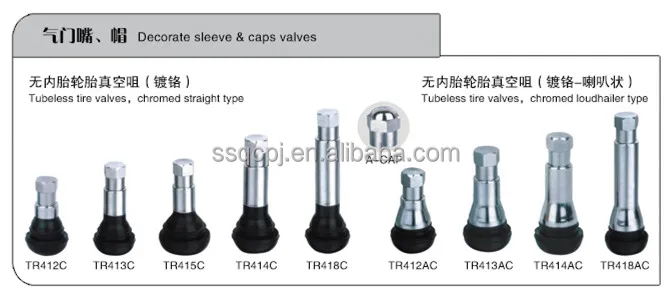
When the valve’s spring is depressed, the valve opens, and air can pass through the Schrader valve.
Schrader valves are also referred to as American valves, as they were patented in the United States in 1893, just two years after their invention.
Schrader valves are shorter, wider, less fragile, and typically cheaper than Presta valves.
Using a Schrader valve is very simple once you know what to do!
The steps below will teach you how to inflate or deflate a tire or system that uses a Schrader valve.
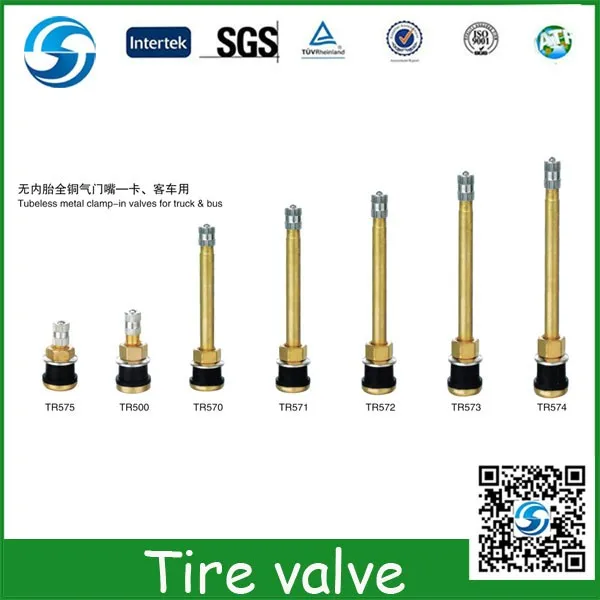
Presta valves are a type of valve used to control the airflow into and out of the inner tube of a bicycle. They’re long and narrow and are found on the majority of modern bikes.
Invented by Frenchman Etienne Sclaverand Presta valves are often fittingly referred to as the French valve.
The exact date of invention for the Presta valve isn’t known, but it’s thought to be just after 1880.
Presta bike valves are lightweight and are made in varying lengths to accommodate wheels with deep-section rims, typically found on road bikes.
Presta valves contribute to a stronger wheel, as their thin valve stem only requires a small hole in the rim. Nowadays, Presta valves are found on most modern bicycles.
Due to their thin stem and partially external valve mechanism, Presta valves are more fragile and slightly more expensive than other types of bike valves.
Using a Presta valve involves one more step than other bicycle valve types. That being said, it’s still straightforward to inflate or deflate an inner tube that uses a Presta valve.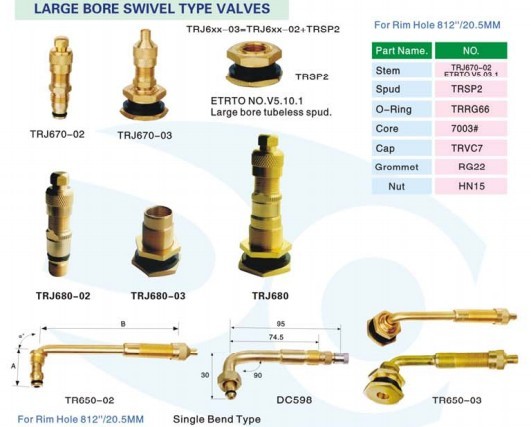
Follow the steps below, and you won’t have any trouble:
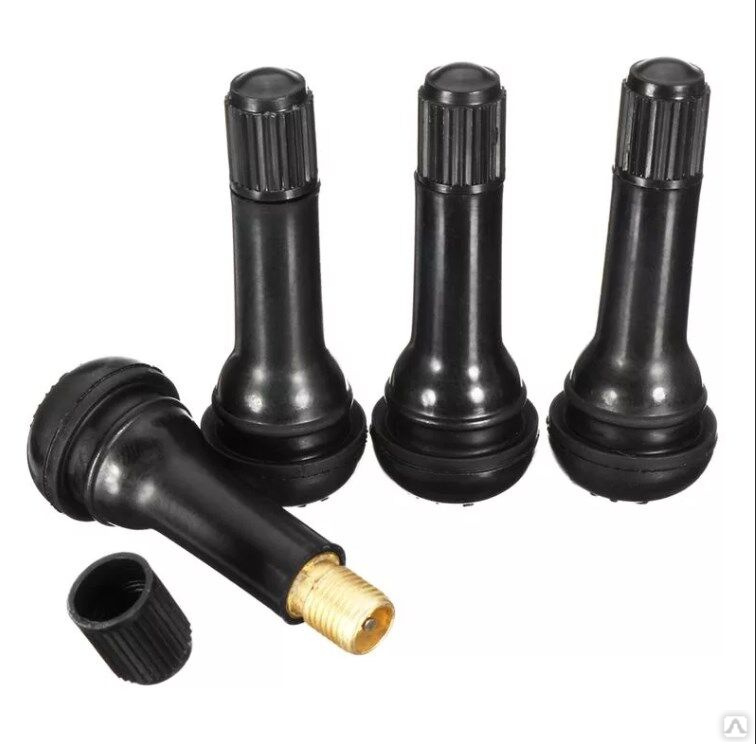 External threading on the stem allows the use of rim nuts.
External threading on the stem allows the use of rim nuts.Dunlop valves, also known as Woods or English valves, aren’t common in the USA or the UK. Several European countries use them, but they’re primarily used across Asia and in multiple developing countries.
Invented by C. H. Woods, the Woods valve (modern Dunlop valve) quickly replaced the original valve created by John Dunlop.
The modern Dunlop valve is much easier to inflate and maintain than the original, which used a tight rubber sleeve to regulate airflow.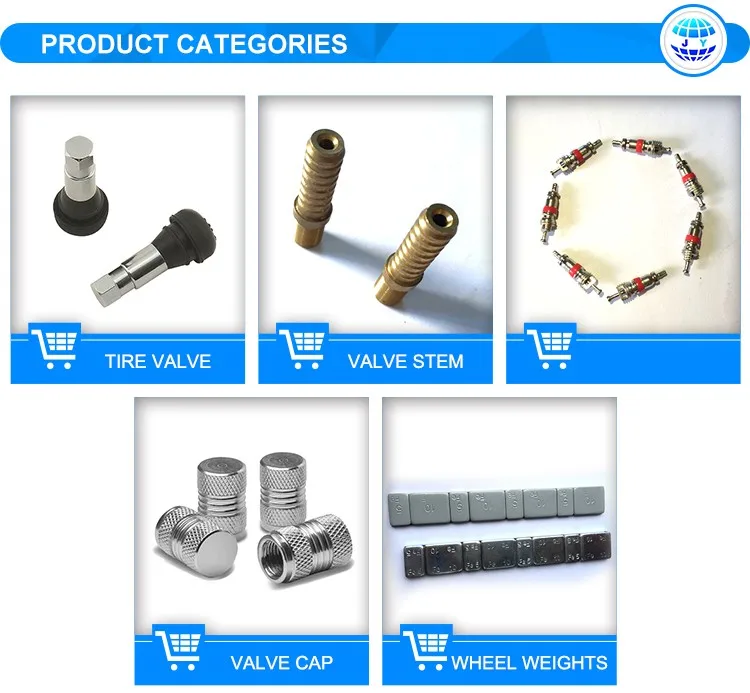
This rubber sleeve often deteriorated over time, meaning more maintenance was required to keep them functioning correctly.
Unlike Schrader and Presta valves, the Dunlop valve doesn’t require a special tool to remove its core. Their straightforward maintenance and robust stem are perhaps why Dunlop valves are so popular in the developing world.
The Woods valve has a similar-sized stem to a Schrader valve. However, it requires a Presta pump to inflate unless used with a bike tire valve adapter
The stem size of a Schrader and a Dunlop are the same. Therefore, these two valves can be used interchangeably on wheel rims.
Inflating a Woods valve tire is very easy.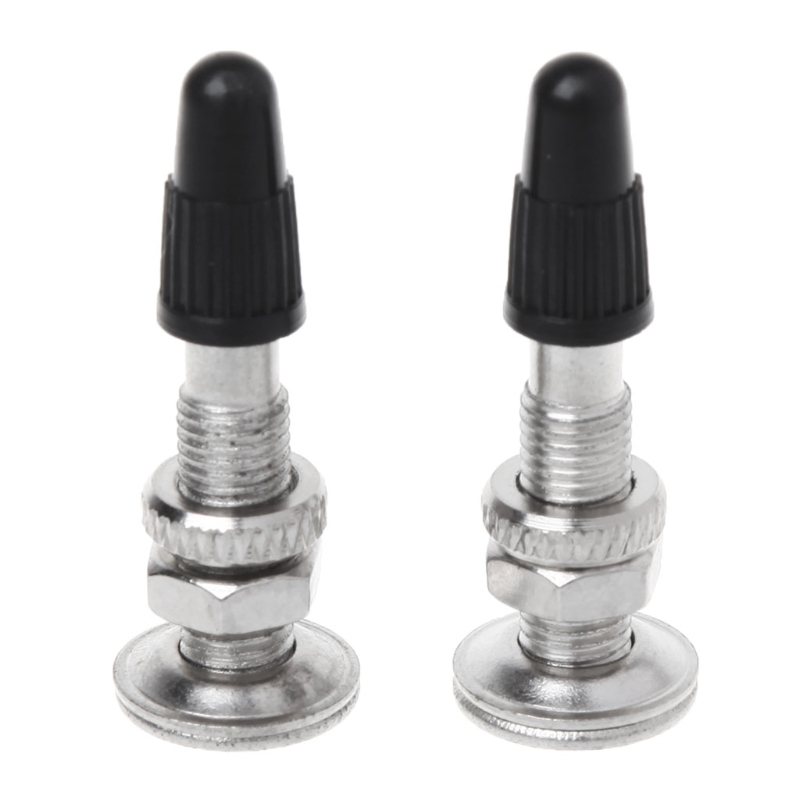 All you’ll require is a Presta compatible pump.
All you’ll require is a Presta compatible pump.
Unlike Schrader and Presta valves, Woods valves can’t be deflated by depressing a valve core pin.
Instead, to deflate a Woods valve, you’ll need to remove the valve core to allow pressure to be released from inside the tire.
Remove valve stem capRemove valve top nutGrip tight and slowly remove valve core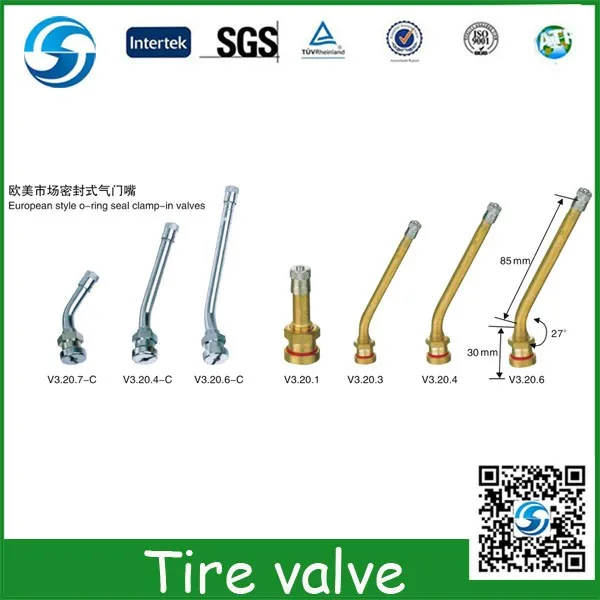
Tubeless valves work with tubeless wheel setups. Presta and Schrader tubeless valves are available and are simply a valve on its own without the inner tube.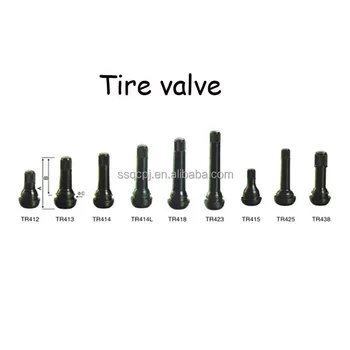
Instead, the tubeless valve has a rubber base that seals against the inside of a wheel’s rim to maintain air pressure inside.
Cyclists that ride tubeless tires normally add a sealant liquid inside the tire.
When inflated, the sealant plugs any leaks and should a rider have a puncture, the sealant will be forced out of any puncture holes, quickly resealing the tire so that it can be reinflated.
As this tubeless bike valve is a Presta valve, scroll up to read about the anatomy of a Presta valve.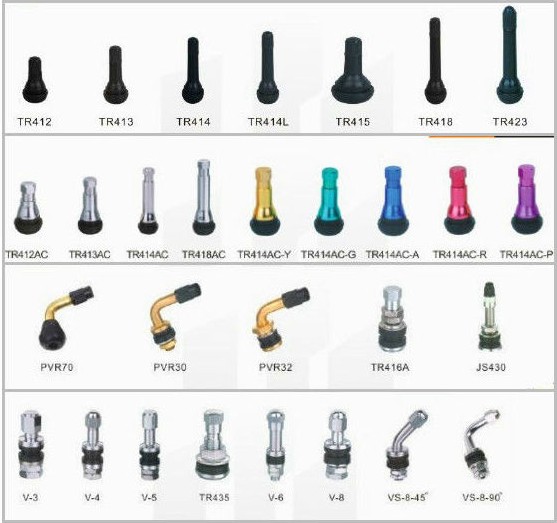
Otherwise, the only unique feature of tubeless valves is their rubber bung.
Bike tire dust caps act as an added layer of protection for your valves.
They prevent any excess dirt, buildup, or debris from entering the valve and potentially damaging it over time.
Dust caps are inexpensive and, therefore, very accessible to every bike owner.
Custom valve stem caps are also a great way to customize your ride for a low price.
If your bike valve stem caps are missing or you’ve been cycling without them, this short article explains why you NEED to replace them.
Stem valve nuts are fitted on threaded valves and prevent your tire valves from sinking into your rim when inflating your tires.
There’s an ongoing debate on whether stem valve nuts should be left on after tires are inflated.
To be completely honest, once you’ve inflated your tires, whether you leave the valve nut in place or remove it, won’t make much difference.
Some cyclists complain their stem valve nuts rattle whilst cycling. If this is the case, remove them and keep them somewhere safe for the next time your tire pressure is low.
Whilst Presta and Dunlop stems have a similar diameter, the nuts they use aren’t interchangeable.
Where there are multiple valve types avalible, cyclists often find themselves with the wrong pump for their bike tire valve type.
If you’re in this position, don’t worry. You won’t have to replace your inner tubes. All that’s needed is a valve adapter to convert your existing valve into a valve type compatible with your pump!
If your bike uses Presta valves, but your pump only works with a Schrader valve, a simple Presta to Schrader valve adapter will do the trick.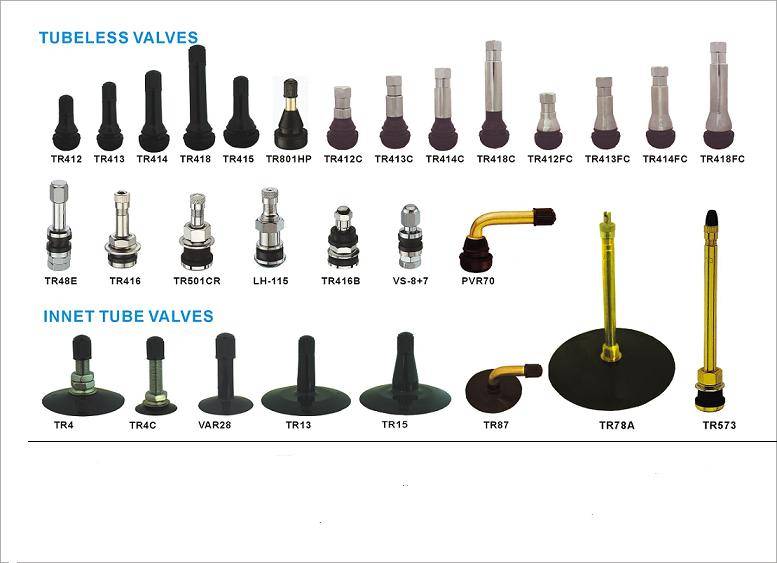
Similarly, if you have Schrader valves on your bike but your pump is for Presta valves, you can easily pick up a Schrader to Presta valve adapter for a very reasonable price.
Presta valve extenders are used to extend the length of your Presta valves.
Presta valve extenders are used by cyclists who use deep-section rims, whereby the standard length valves aren’t long enough to pass through the rim or for the pump to connect to.
While helpful, one disadvantage of Presta valve extenders is their ability to rattle while a bike is in motion. However, there are a few steps you can take to reduce rattling that I explain below.
Another issue you should be aware of before attaching a Presta valve extender is that they increase leverage on the valve, so if care isn’t taken when installing, they can damage the valve or the inner tube.
If you need to use a bicycle valve extender but haven’t done so before, follow this brief guide for the best fit:
Before we begin, you’ll need:
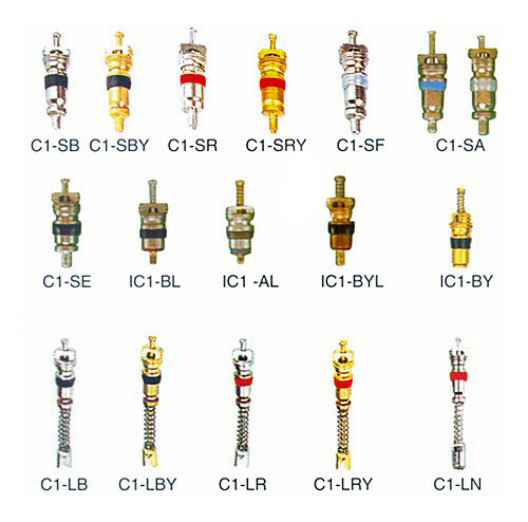
Valve stem cores are the part of a valve that regulates airflow in and out of the tire or system.
Schrader, Presta and Dunlop valve cores all work in different ways.
Schrader valves are spring operated and allow air to flow freely into or out of the tire/system when the central core pin is depressed.
Presta valve cores use a similar central core pin, although it’s not spring-loaded. Instead, it uses a valve core nut.
When a Presta core nut is loosened, the central valve pin can be depressed, but when tightened, the valve core pin is held in a closed position.
Dunlop valve cores only allow air to pass into the tire. Therefore, to deflate a Dunlop tire, the valve core needs to be fully or partially removed.
Not all tire valve cores are removable, so it’s worth paying attention to this when buying a new inner tube or replacement valve.
The correct valve type for your bike is equally as important as using the right inner tube.
The questions below will provide additional knowledge to ensure you know what you’re doing regarding any valve-related issues!
If you’re unsure which valve type you need for your bike, inspect the valves you have on your bike and compare them with the pictures shown above in the article.
If your wheels don’t have inner tubes in them at the moment, a Presta valve is probably your best bet, especially if your bike is modern.
Almost all new bikes use Presta valves, and they’re compatible with Schrader and Dunlop rims, so if you’re unsure, Presta valves will be a fail-safe option.
The length of the tire valve you use depends on the rim depth of your wheels.
The larger your rim depth, the longer your valve length should be. A correct size valve will allow you to attach a pump and inflate without a struggle.
The best way to decide what valve length you require for your bike is to measure the depth of your wheel rim from either side of the valve hole.
Once you’ve measured your wheel rim depth, add 15mm to your measurement, this will ensure you’ll be able to attach a pump to the valve once assembled!
While it is possible to put Schrader valves or a Presta rim, you must widen the valve’s hole to achieve this.
I don’t recommend drilling the hole yourself, as this can damage the structural integrity of your bike’s rim if not done correctly.
In most cases, you won’t have the specialist tools required for the job, and instead of paying someone to drill your rims for you, it may be worth getting some new rims instead.
You can use Presta valves on Schrader wheel rims, but considering they are much thinner than a Schrader valve, they’ll likely be loose, and this can damage the inner tube.
You can get a rim valve hole grommet, which will hold the Presta valve in place and help prevent your inner tube from catching the valve hole.
However, using a grommet still won’t guarantee that the rim won’t wear down your inner tube. So I’d only recommend using a Presta inner tube on a Schrader rim if no alternative is available.
To inflate a Presta Valve with a Schrader compatible pump, you’ll want to get hold of a Presta to Schrader adapter.
Once you’ve got hold of the correct valve adapter, screw it onto the Presta valve, and you’ll then be able to use the Schrader pump to inflate it.
If you only have access to a Schrader bike tire pump, don’t panic.
In this guide, I give a short yet detailed explanation of how you can inflate your Presta tire without an adapter.
All you’ll need is a Schrader pump (with locking capability) and a Presta valve stem cap (dust cap).
Learn this nifty bike hack here.
The valves on your bike are very easy to find! Bicycle valves are short metal tube-like structures that protrude from the front and rear wheel rims.
Don’t get your valves confused with your spokes, though!
If you’re struggling to find your valves, my complete guide on bicycle anatomy will point you in the right direction!
If your Schrader valve isn’t working correctly or you suspect it has a slow puncture or leak, it’s best to run your inner tube through a bowl of water whilst inflated.
If air is escaping from your inner tube, the leak will release bubbles into the water.
If the inner tube itself is damaged, you can get a repair kit to mend it, or if it’s damaged beyond repair, get yourself a new replacement.
If the leak is coming from the valve core and your Schrader valve has a removable core, you can replace the core by using a core removal tool and getting hold of a replacement core.
Hopefully, your bike valve-related questions have all been answered!
It took me a while to put together this detailed guide, so it’d be great if you could leave some feedback below.
If you think something is missing from this guide or if there’s any way I can make the information clearer, let me know, and I’ll make changes so that the content continually improves for the next readers!
If you aren’t already, make sure to use a good quality bike lock to secure your bike.
Whilst a decent lock will cost more money, it’ll be cheaper than replacing a stolen bike!
As always, lock it or lose it.
Ciao for now.
Getting to know your bike tire valves has some serious value, considering it could keep you from a ruined ride. Sometimes it’s tough to tell which type of valve your bike has—and then how to take care of it.
For starters, you may notice when you pump your tires that your bike has a valve similar to what you see on cars—that’s called a Schrader valve. Or you might see a slender, exotic model known as the Presta valve. Why do different bikes use different valve systems, and how do they compare to one another? Here’s everything you need to know about bike valves so you can keep rolling without setbacks.
Bikes typically come with one of two types of valves. Schrader valves are more common; they’re the same as those used on cars and are found mostly on inexpensive bike models. Most higher-end bicycle tires, however, are inflated with a Presta valve, designed specifically for bikes. Here’s how to tell the difference:
Bicycle tubes with Presta, left, and Schrader, right, valves.
angelsimon//Getty Images• Schrader valve: These are wider than a Presta valve and typically the same circumference top to bottom. Often wrapped in rubber when used on wheels, the outer wall is threaded to accept a cap or pump head. The pin in the center is a spring-loaded check valve that controls airflow in and out. Check valves are meant to allow airflow in only one direction; your Schrader-valve tube requires pressure on the inner pin to let air in.
Join Bicycling All Access for more tips and tricks
• Presta: About half as wide as a Schrader valve and made entirely of metal. They taper slightly toward the top, and some are threaded all the way down. The valve stem opens by unscrewing a knurled (textured) nut at the top. Unlike a Schrader valve, the system doesn’t use a check valve—it seals entirely based on pressure in the tube or tire. On many Presta valves, including those for use in tubeless systems, the entire core is removable. Take care when unscrewing the stem nut to not accidentally unscrew the entire core, which will let all the air out of the tire quickly.
• Bonus: If you travel to the Netherlands or Asia, you may see a third type of valve, called the Woods, or Dunlop, valve. It looks like a fatter Presta and is often found on city bikes.
A Woods or Dunlop valve.
nilsz//Getty ImagesYou’ll find both Schrader and Presta valves on the tires—and more specifically, jutting toward the hub on the inside of the rim. But you’ll also find Schrader fittings on suspensions: rear shocks and forks, as well as dropper seatposts. With droppers, the Schrader fitting is typically recessed inside the post itself.
Presta valves were invented by the same guy who went on to found Zéfal, one of the leading bike pump manufacturers. Compared to Schrader valves, Presta valves are ideally suited to bike wheels for many reasons:
A Presta valve with the cap on.
AFP Contributor//Getty ImagesNow 12% Off
$7 at Amazon
Credit: Slime$6 at Amazon
Credit: Kenda$16 at Amazon
Credit: Johnson and JohnsonNow 42% Off
$35 at Competitive Cyclist
Credit: ContinentalYou can put a Presta-specific tube in a rim drilled for Schrader valves, but it’s not advisable for anything more than an emergency fix. Tubes and tires tend to move slightly on the rim.
In the wider Schrader hole, a Presta can move around enough that the rim will actually cut the tube at the base of the valve. If you must install a Presta tube in a Schrader rim to get home, use the valve nut to secure it close to the rim.
Meanwhile, the only way to put a Schrader tube in a Presta-drilled rim is to widen the valve hole—something we don’t recommend, as it may compromise the rim’s integrity.
A Presta-only pump has a rubber gasket in the head, or chuck, that will fit snugly around a Presta valve but not a Schrader. A Schrader-only pump has a pin in the center of the chuck to depress the Schrader stem’s check valve. If you try to put it on a Presta tube, it simply won’t fit.
Many modern pumps feature dual-head designs. These come in three types:
• Twin head: Found on some floor pumps, the chuck features separate gaskets for Presta and Schrader valves.
• Swappable head: Found on some frame and mini-pumps, this head has a gasket with a conical hole. One side is narrower for Presta valves. Simply unscrew the chuck cap, flip the gasket to the side that matches the valve, and screw the cap back on.
• Adjustable head: The newest and most common style, this heads fits Presta and Schrader valves without swapping any internal parts. Just press the head firmly onto the valve, flip the lever to secure, and start pumping.
You can’t use a tire pump on parts of your suspension or a suspension pump on tires. Tire pumps don’t typically reach the kind of pressure suspension elements need and lack the fine-tuning options that suspension pumps have. And suspension pumps are so small that it would take forever to inflate a Schrader tire.
Closeup of a disassembled Schrader valve.
aquatarkus//Getty ImagesMost valves are already attached to tubes, so swapping one means replacing the whole tube. However, there are two scenarios that may require a valve replacement:
• Tubeless: Presta valves for tubeless tires seal by a knurled nut that fixes the valve to the rim. If that seal ever fails and you’re losing air, you can just replace the valve. Some tubeless valves are specific to the wheel or rim model; make sure you’re getting the right replacement, or the gasket might not seal properly.
• Replaceable cores: Some Prestas have replaceable cores that unscrew—key for adding valve extenders to aero rims, or for adding tire sealant (which can gum up the valve core if it’s not removed first). If your tire isn’t holding air, or if sealant has gummed up the core, you can simply swap it for a fresh one. Most local bike shops have replacement cores for sale. You’ll know your valve has replaceable cores if its sides have small, flat sections right as the valve tapers toward the top nut.
Now 14% Off
$30 at Amazon
$65 at Amazon
$70 at Jenson USA
$23 at Amazon
Joe Lindsey
Joe Lindsey is a longtime freelance journalist who writes about sports and outdoors, health and fitness, and science and tech, especially where the three elements in that Venn diagram overlap.
Car valve is an element that we rarely pay attention to. However, it is extremely important to maintain the correct tire pressure, which affects a number of vehicle parameters. Damaged tires can lose up to 0.7 bar per week, which can lead to dangerous driving situations.
So when should the valves be replaced?
The valve is a small but very important part of the wheel. The car's valve allows you to adjust the pressure in the tire - without it, this would not be possible. This makes it easy to inflate and deflate the tire without disturbing the rubber structures. Thanks to this, drivers influence the level of tire pressure, which leads to increased safety while driving.
Almost all automobile wheels use a Schrader valve, commonly referred to as the American valve (AV), which was patented in 1893 years old Often you can also find it in bicycle wheels. Other types of valves that are widely used are well known primarily to Dunlop and Presta cyclists.
If you are interested in the types of automotive valves, you cannot miss the hidden valves that are becoming more and more popular. These are shorter tubes than Schroeder suggested, with an expanded structure that does not extend beyond the tire rim. Hidden busbar valves are mounted with a special cable. They are more expensive and slightly more demanding to replace, but apart from the visual values, they provide increased protection against tearing or premature failure of the rubber. Most often, these types of valves are used for aluminum rims.
Attention! Whether we have standard or concealed valves, the assembly must be left to the experts.
Insufficient pressure increases tire damage while driving.
The Schrader valve is a pneumatic valve. It consists of the following parts:
Tires suffer various damages while driving. Dynamic acceleration, braking or maneuvering cause the rubber to deform regularly and return to its original state after a while. The same pressure is applied to the valve, which can immediately deviate up to 30°. The frequency of this phenomenon can damage its structure, exposing the tire to loss of tightness. Even with a slightly distorted valve, tire pressure can drop by 0.2-0.7 bar per week, which increases the risk of wheel damage while driving. Too low a pressure level can cause many problems. Significantly increases the braking distance (even in wet conditions, even by 20%!), Threatening to lose control of the car or even tire explosion. Insufficient pressure also affects the life of the tires and suspension and brake system.
The best time to replace a car valve is during the seasonal tire change. In general, curing plants offer these services as a standard package. Even if we have replacement wheelsets and don't have to take the tire off the rim, valve replacement shouldn't be a problem. Various valve models are available on the market. The longest are reinforced metal valves that can be replaced every two seasons. Rubber equivalents are best replaced every six months. This is a habit that will greatly increase our safety when traveling. Regular replacement of automobile valves does not require large expenses. What's more, they are inexpensive. Reinforced or visually appealing models (like chrome valves) cost a bit more. There are also much more expensive options on the market.
Automotive valve nuts have more of an impact on performance and safety than you think. During the trip, fluids and other dirt from the road enter the unprotected valve and settle on its walls. By letting in compressed air, we push out the dirt, making the valve block and losing its tightness. This can lead to a rapid drop in tire pressure.
It is worth noting that even such a small element as a valve can perform decorative functions. Tuning enthusiasts outdo themselves with valve cap ideas. They can present colorful pictures or take on various forms, such as a tiny pomegranate.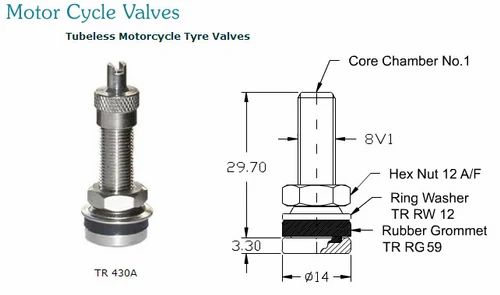 Chrome valves or neon colors are also very popular. Interestingly, you can also buy glowing car valves from distributors.
Chrome valves or neon colors are also very popular. Interestingly, you can also buy glowing car valves from distributors.
The term marque may appear in the topic of valves. What does it mean? This is an escutcheon, usually made of steel, that contains a key to remove the valve core.
Contents
The tire valve is the tip that inflates the tire and seals it. It is attached either directly to the inner tube or to the wheel rim. The tire valve is damaged while driving and must be replaced at the same time as the tires.
La d'un valve tire A car tire is a rubber tip that sits on the tire.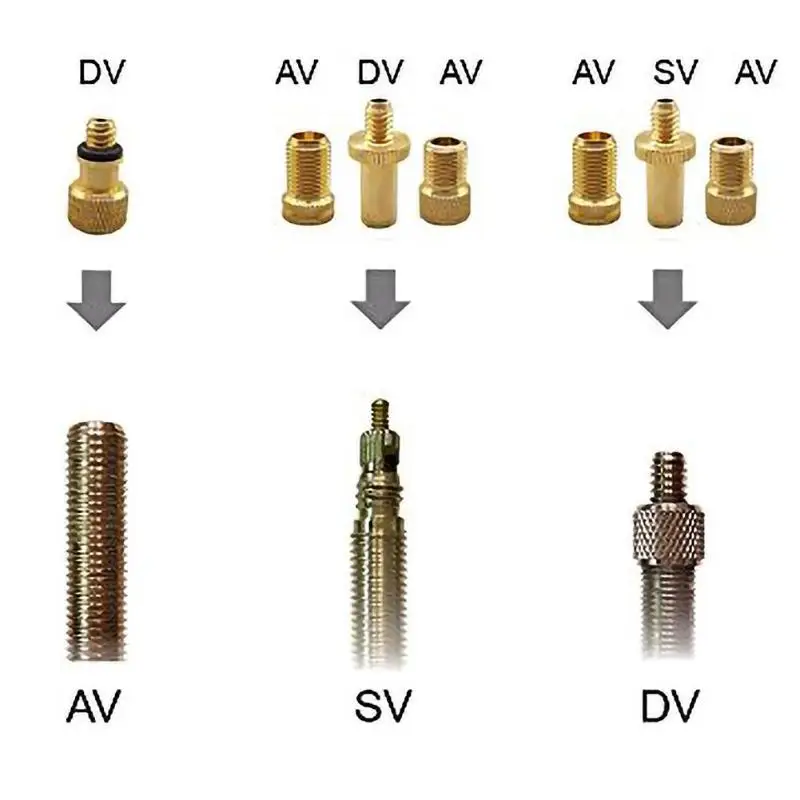 The tire valve, fitted with a plastic cap, has two main functions:
The tire valve, fitted with a plastic cap, has two main functions:
The tire valve can be attached to the inner tube or to the rim, as is the case with tubeless tire valves. It is of two types:
In short, the tire valve prevents air from escaping the tire, but also prevents dirt from entering the tire. Hence, it also plays a protective role. Finally, this allows, in particular, to do tire pressure and then maintain that pressure by keeping the air inside.
One of the functions of a tire valve is to seal it by keeping air inside the tire. But over time and miles, it can get worse as it is subjected to the pressure and centrifugal force of rolling tires.
Damaged tire valve can cause Air leak and pressure drop tire. The main cause of tire valve leakage is its age, and the mechanism it contains eventually fails.
The risk of tire valve failure lies in the slow release of air from the tire. No matter how hard you apply pressure and re-inflate it, it will continue to lose air. However, driving with improperly inflated tires is dangerous: loss of traction, increased stopping distance, reduced tire life and risk of bursting.
Therefore, the valve in a leaking tire must be repaired or replaced. We also recommend replacing tire valves every time you change tires.
To change the tire valve, you must disassemble the wheel and separate the tire from the rim. You must use valve stem extractor to replace the latter. However, there are also CIP tire valve replacement tools, but these are often not compatible with electronic valves.
Material:
Start by loosening the nuts on the wheel whose tire valve you want to replace. Do this with the car on the ground without completely removing the nuts, then jack up the car and place it on jack stands to secure it.
Finish loosening the wheel nuts and remove it. Lay it on the floor with the outer side up. Remove the tire valve cap, then remove the core with a valve stem remover. Let the tire go down.
After the tire is deflated, you must detach it from the rim. You can use a sledgehammer all over the tire. Then, using an iron, remove the tire from the rim by inserting it between the tire and the edge of the rim.
After separating the tire from the rim, you can remove the stem from the tire valve. Use pliers to remove the old valve and install the new one in its place. You can then put the tire back on the rim and inflate it to the pressure recommended by the manufacturer. Complete the wheel assembly and check the tire valve for leaks.
The price of a tire valve depends on the type of valve, its size and of course where you buy it.